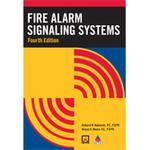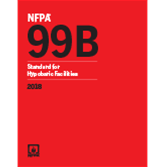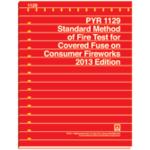Description
Help fire fighters meet fireground challenges safely with thermal imagers designed, tested, and certified to the 2018 edition of NFPA 1801.
- Added battery locking mechanism testing, so that where the use of a tool-secured feature is relied upon to meet ANSI/ISA-12.12.01 and this feature is not automatically engaged, the camera will inform the user by way of a message that prevents normal use of the camera.
- All imagers are now required to pass a 2-hour run-time conducted with video and image capture functions active.
- The thermal imager must display a useful image within 30 seconds of power being applied (battery installed).
- The thermal imager must display an icon in the form of a red dot inside a green circle when recording audio/video.
- Camera resolution of 76,800 pixels (320 x 240) is now a minimum requirement.
- A sensor/image refresh rate of at least 25 Hz is required.
- Only specified symbols can be displayed at power-up.
- Published:
- 08/21/2017
- ISBN(s):
- 9781455917235
- ANSI:
- ANSI Approved
- Number of Pages:
- 55
- NFPA 1801: Standard on Thermal Imagers for the Fire Service contains minimum requirements for image quality, design, performance, testing, and certification of new thermal imagers for the fire service. Fire fighters use these imagers during emergency incident operations to assist them in locating victims and fire as well as possible avenues of fire extension while also assisting in accountability of members while they are operating in the IDLH. The information provided by the thermal imager may be relayed to the incident commander to assist in making tactical decisions.
In an update to the Standard’s scope, the 2018 edition now also applies to the design, performance, testing, and certification of thermal imagers originally certified to the 2013 edition of NFPA 1801, allowing upgrades that may incorporate replacement parts, components, and/or software to be certified to the new 2018 edition. This edition of NFPA 1801 also has a new design requirement for an audio/video recording indicator if so equipped.
Other revisions impact thermal imager technical requirements, such as:
Staying up-to-date with the latest NFPA 1801 is essential for thermal imager manufacturers and testing and certification authorities to ensure that equipment will perform as expected on the job.




